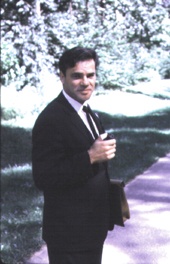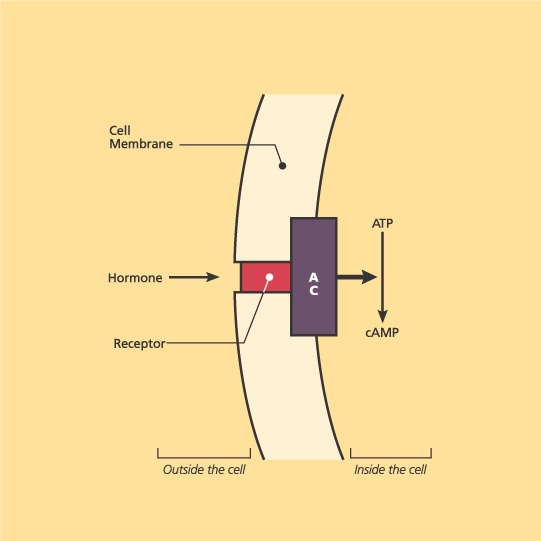Rodbell's Inspiration: Sutherland's Second Messenger
Martin Rodbell, 1967 Courtesy of
Robert O. Scow, NIDDK
What causes that surge of energy you get when you are frightened? Before the work of Earl W. Sutherland, scientists knew that the adrenal gland produces a hormone called epinephrine, which travels to the body's cells and causes an increase in blood sugar. The sugar gives your body energy to react to stressful situations. But no one understood exactly how this hormone produced such an effect.
In the late 1950s, Sutherland investigated the effect of epinephrine on liver tissue. He and T.W. Rall discovered that the hormone—the "first" messenger—stimulates formation of a "second messenger" within cells. It is this second substance, cyclic adenosine monophosphate (cAMP), that stimulates the breakdown of stored carbohydrate into sugar. Sutherland suggested that the actions of many other hormones could be explained in the same way.
In 1965, Martin Rodbell was inspired when Sutherland spoke at the NIH. Rodbell realized that his isolated fat cells were the perfect medium for further investigation of the mechanism of hormone action.
Sutherland's model of hormone action
A receptor accepts a hormone and stimulates adenylyl cyclase (AC) to convert adenosine triphosphate (ATP) inside the cell to cyclic adenosine monophosphate (cAMP). The hormone is the first messenger; cAMP is the second. Sutherland won a Nobel Prize for this work in 1971 Courtesy of NY Academy of Sciences - G.A. Robinson



